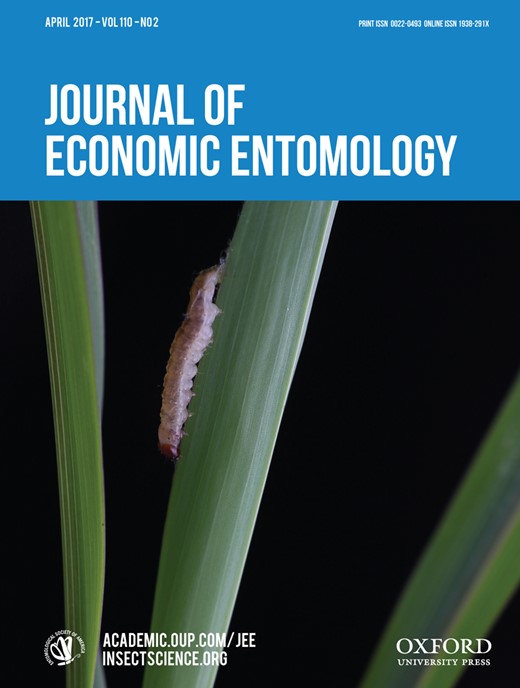-
Views
-
Cite
Cite
Hao Wu, Xing Ping Hu, Arthur G. Appel, Temperature-Dependent Development and Thermal Sensitivity of Blaptica dubia (Blattodea: Blaberidae), Journal of Economic Entomology, Volume 110, Issue 2, April 2017, Pages 546–551, https://doi.org/10.1093/jee/tow278
Close - Share Icon Share
Abstract
Temperature-dependent development of nymphs of the Dubia cockroach, Blaptica dubia Serville, was described using constant-temperature data collected from laboratory experiments at 15, 20, 25, 30, 35, and 40 °C. Simple linear regression models were developed based on the data from each instar. Degree-days required to complete a particular life stage were estimated as 457.5, 668, 1,031, 1,317, 1,515, 1,429, and 2,071 for instars 1–7, respectively. Nymphs developed to adulthood at 20, 25, and 30 °C, but all died before developing into fifth instar at 35 °C and into second instar at 40 °C. Critical thermal maximum (CTMax) and critical thermal minimum (CTMin) of B. dubia were also measured for each instar. CTMax ranged from 44.8 to 49.9 °C for fourth and second instars, respectively. CTMin ranged from approximately −2 °C for seventh instar to − 3.1 °C for second instar. There was no relationship between body mass (instar) and CTMax; however, CTMin was positively correlated with body mass. These results could be used to control the development rate of B. dubia and adjust the optimal rearing temperature for B. dubia in a given situation.





